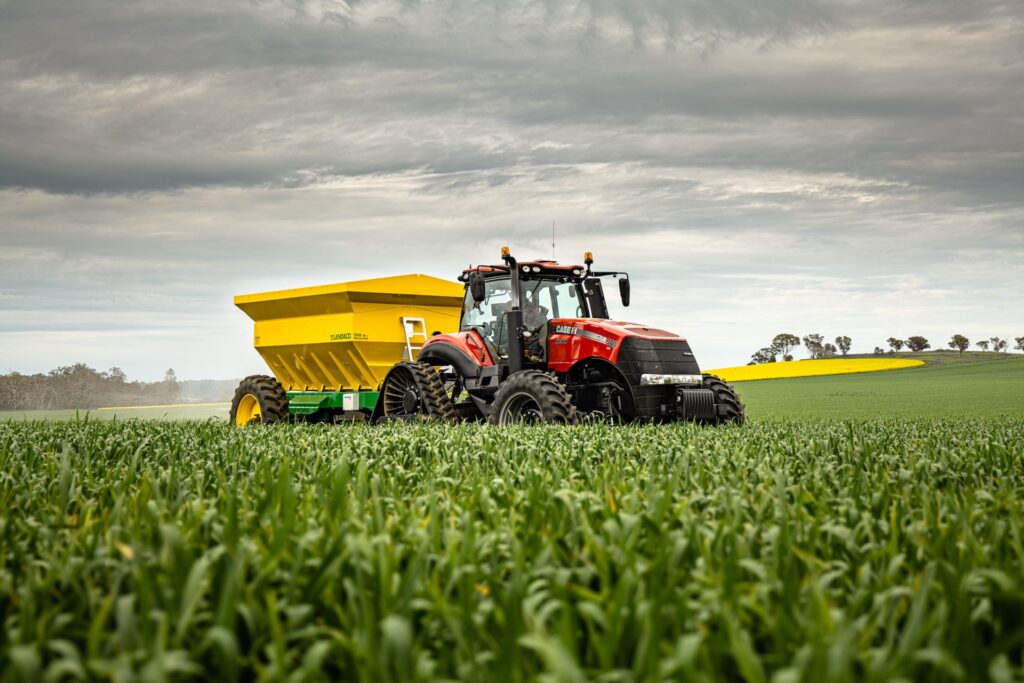The U.S. Produces More Food Than It Can Consume
Hunger isn’t unique to America. It’s so widespread that the United Nations prioritized it second of its 17 Sustainable Development Goals.
But in a country like America, known for its excess and consumption, hunger remains rampant.
According to Feeding America, of the 3,143 counties in the U.S., 100% of them have food insecurity. And 44 million Americans — including 13 million children — battle food insecurity daily.
It’s worse for Latino children (26% food insecure) and Black children (29% food insecure), and more so for children in single-parent families (33% food insecure).
So after recently watching an interview with an American farmer, we were perplexed:
- The U.S. has ~2 million farmers.
- The average farmer feeds 350 people.
- That’s 700 million people being fed.
But America’s population is 332 million. So why are the majority of those mouths being fed by American farmers … not Americans?
And with 22% of our landfill-bound waste being food, how does food insecurity exist in this country?
One answer, among a litany of domestic social issues that we’re not going to dive into today, is that a LOT of our food ends up feeding …
Overseas Mouths
In 2020, agricultural exports totaled $146 billion. In 2021, that figure was $177 billion. Last year, it increased 11% to $196 billion.
Some of the most popular items we ship overseas include:
- $34.4 billion worth of soybeans.
- $31.4 billion worth of poultry, dairy, wheat and pork.
- $18.6 billion worth of corn.
- $10.5 billion worth of beef.
- And $9.8 billion worth of fresh fruit and fresh and processed vegetables.
We also export an inconceivable amount of tree nuts, baked goods, cereals and pasta.
And while we import a considerable amount of foodstuffs (65% of our seafood, 50% of fruits and vegetables), those figures pale in comparison to what’s exported.
The Big Ag companies that are feeding us — and the rest of the world — are profiting enormously from record food prices and increased food yields.
3 Big Ag Stocks
As much as we’d like to see hunger eradicated and an end to agricultural practices resulting in pesticide/insecticide runoff, water overuse in drought-stricken areas and factory farming’s methane/nitrous oxide emissions … the system in place isn’t changing.
Why not? The revolving door of legislators/regulators and industry employees/lobbyists. Look no further than the $169 million agribusiness spent last year lobbying the U.S. government’s 794 “public servants” that used to work … in agribusiness.
(This is where we’d usually insert a joke about the clichéd and thoroughly disproven contention that markets self-regulate. But the thousands of North Carolinians suffering from respiratory disorders and increased incidences of cancer because they live near football field-sized cesspools of literal hog farm shit wouldn’t find it funny.)
So, as we often do with unfortunate albeit unlikely-to-change circumstances, we look for investable opportunities.
No. 1: The Andersons
The Andersons (ANDE) got its start in 1947 as a truck terminal for the grain industry. Today, it operates in agricultural commodity merchandising, renewables and plant nutrients.
Last year, the company had revenue of $17.32 billion, making it comparable to more recognizable companies like Kohl’s, AutoZone, LG and BlackRock. But the difference between those companies and ANDE — besides the sectors in which they operate — is that The Andersons is having a fantastic year.
Shares are up 56% year-to-date. The stock has a healthy price-to-earnings ratio of 21.11, and its dividend yield of 1.4% pays 19 cents/share quarterly.
No. 2: Archer-Daniels-Midland
Archer-Daniels-Midland (ADM) was founded in 1902 and is the 35th largest company in the Fortune 500. It operates over 270 plants and 420 crop procurement facilities, focusing on processing cereal grains and oilseeds for use in food, beverages, nutraceuticals and animal feed.
In 2022, revenue was $101.84 billion, up from $85.24 billion in 2021. ADM pays a 2.49% dividend, or 45 cents/share quarterly.
Shares have fallen 19% so far this year, but the stock’s ridiculously cheap P/E ratio of 10.08 suggests its undervalued at current prices … something its Relative Strength Index reading of 40 also supports.
No. 3: CHS Inc.
CHS Inc. (CHSCP) is a Fortune 500 cooperative founded in 1931 as Farmers Union Central Exchange. CHSCP owns and operates food processing plants, food wholesale facilities, financial services and farm supply businesses, distributes Cenex brand fuel at 19 locations in the West and Midwest and co-owns Ventura Foods, a vegetable oil processor.
In 2022, revenue was $47.8 billion. Shares have increased year-to-date by 3.88% while paying an incredible dividend yield of 6.79%, or 50 cents/share quarterly.
The following chart illustrates the performance of these three agribusinesses over the past two years, with ANDE in dark blue, ADM in orange and CHSCP in light blue:
TL;DR
Despite food insecurity existing in 100% of America’s counties, the U.S. produces a food surplus that helps feed the world. From 2021 to 2022, agricultural exports increased 11% year-over-year. With food prices remaining elevated and domestic and global demand increasing alongside population, investing in agribusiness can provide portfolio diversification, solid yields and steady share appreciation.

